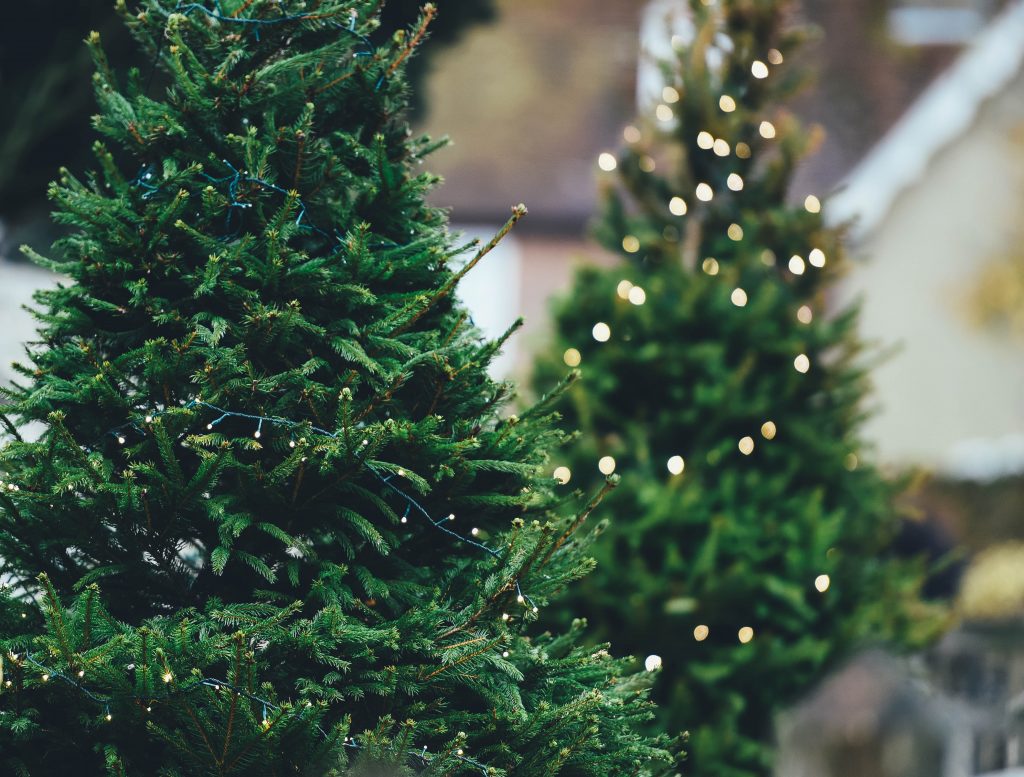
More than 27.4 million real Christmas trees were sold in the U.S. in 2017, according to the National Christmas Tree Association. What happens to them after the holidays is up to us!
Remember, trees that end up in the garbage will take years to decompose because of the lack of oxygen in landfills. So recycle that tree!
James Bernard from Great Forest’s San Francisco office tells us about one of the newest, most innovative ways to dispose of your tree.
FUN FACT: Chipped trees make great mulch but the tough needles actually are resistant to compost bacteria and slow down the process of making compost. So contrary to popular belief, Christmas trees are usually not turned into compost. They are turned into mulch instead.
Biochar that tree!
Biochar is charcoal that can be mixed into soil to improve drainage and nutrient levels, spurring vibrant plant growth. The Stockholm Biochar Project, a Bloomberg Philanthropies’ Mayors Challenge winning entry, was launched in 2017 to turn that city’s plant waste into carbon-capturing charcoal. Now, we hear that the California state government has been in touch with the Stockholm project and has bought the equipment necessary to pilot their own biochar project.
James explains: “In a region vulnerable to droughts, Californians are especially interested in biochar’s ability to lock slow-release moisture into the soil, reducing the need for irrigation.”
“The biodynamic vineyards in Mendocino (Bonterra, Frey, Paul Dolan) have been making biochar from their vine clippings for some time now and I expect the practice may extend to orcharding as well,” says James.
We hope more cities start to explore biochar. If you are not ready to try making biochar on your own, here’s what you can do with your tree:
1. Businesses, check with your haulers and service providers on what you should do and to schedule a pickup. Sometimes this service is offered for free. DO NOT put trees into your compactor as this could damage the machine.
2. Check with your local sanitation department on what is available in your area. In NYC, the annual Mulchfest takes place after New Year’s. New Yorkers can chip their tree at a location near them and even bring a bag of mulch home for their own gardens.
3. Strip your tree. If your community offers curbside collection of trees, remove all lights and decorations. Those can hurt sanitation workers and damage equipment. And DO NOT wrap the tree in plastic. Wrapped trees or trees with items on them often end up in the landfill.
4. Check with your local animal sanctuary or parks department, says the New York Times. Trees might be used for animal food or for habitat restoration.
FUN FACT: Flocked trees (tress that are sprayed with adhesive and cellulose fibers to turn it white) are covered with contaminants and are difficult to recycle. As a result, flocked trees are usually landfilled. So avoid flocking your tree.
Learn more:
- How to Recycle Your Christmas Tree, New York Times
- Real Christmas Trees are Recyclable, National Christmas Tree Association
